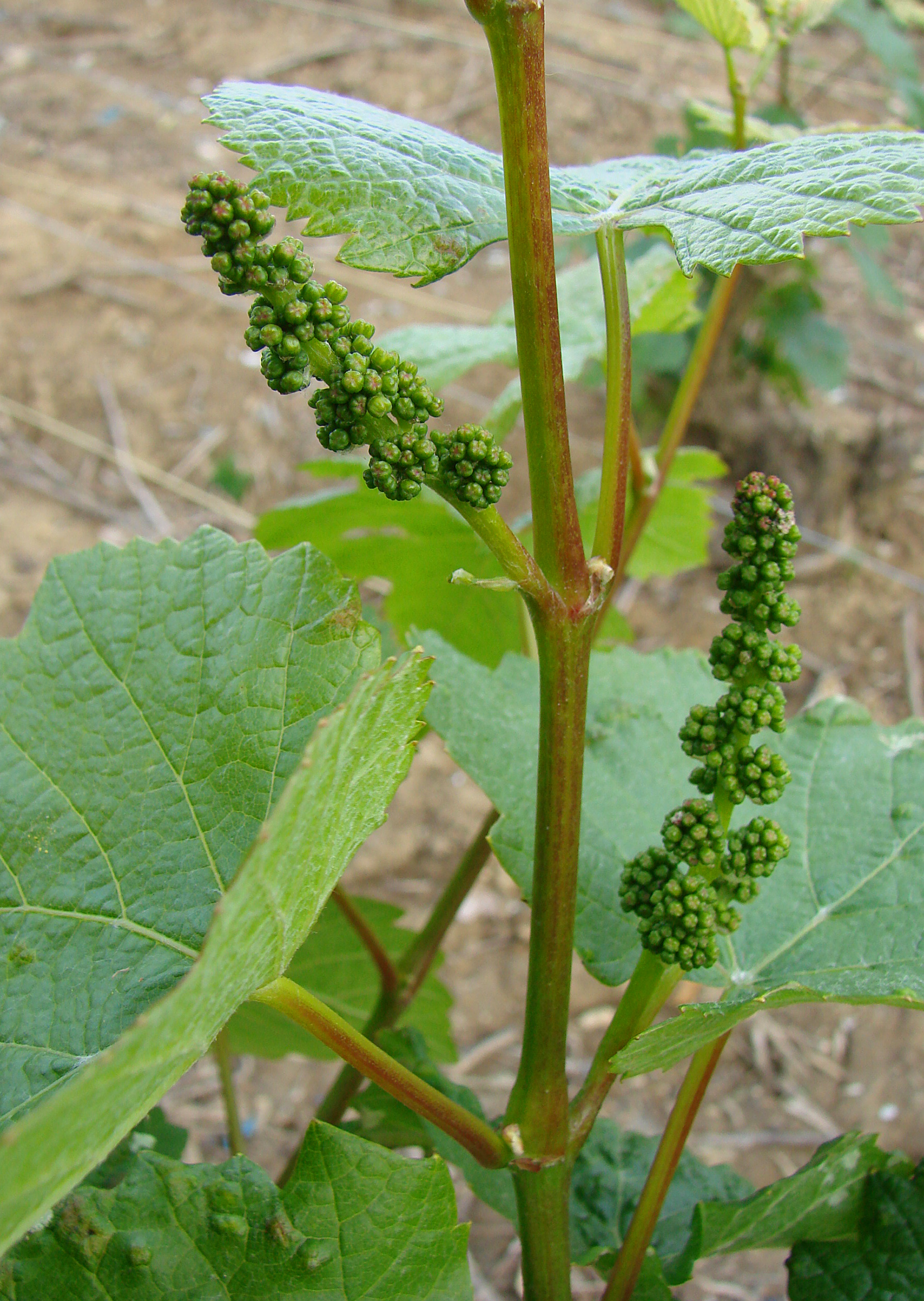|
Vitis × Labruscana
''Vitis'' × ''labruscana'' is a subgroup of grapes originating from a hybridization of '' Vitis labrusca'' and '' Vitis vinifera''. Popular examples include Concord and Niagara grapes, which comprise nearly all grapes processed for juice or jelly in the United States. Such cultivars are frequently referred to as "labrusca", however many are as little as half ''Vitis labrusca'' in their pedigree. Another common term, arguably more accurate, is "labrusca-type". These varieties do in fact possess many of the traits of ''Vitis labrusca'', frequently including slipskin fruit, strong "foxy" flavor/odor, and large leaves with lighter colored and pubescent undersides. Most are self-fertile, unlike wild ''Vitis labrusca''. For much of the history of American viticulture, such varieties made up the bulk of production, particularly outside of California. In more recent years, however, the introduction of chemical pesticides and the development of rootstocks able to tolerate phylloxera ... [...More Info...] [...Related Items...] OR: [Wikipedia] [Google] [Baidu] |
Liberty Hyde Bailey
Liberty Hyde Bailey (March 15, 1858 – December 25, 1954) was an American horticulturist and reformer of rural life. He was cofounder of the American Society for Horticultural Science.Makers of American Botany, Harry Baker Humphrey, Ronald Press Company, Library of Congress Card Number 61-18435 As an energetic reformer during the Progressive Era, he was instrumental in starting agricultural extension services, the 4-H movement, the nature study movement, parcel post and rural electrification. He was considered the father of rural sociology and rural journalism. Biography Born in South Haven, Michigan, as the third son of farmers Liberty Hyde Bailey Sr. and Sarah Harrison Bailey. In 1876 Bailey met Lucy Millington who encouraged his interest in botany and mentored him. Bailey entered the Michigan Agricultural College (MAC, now Michigan State University) in 1877 and graduated in 1882 (he had taken a year off from study for health reasons). The next year, he became assist ... [...More Info...] [...Related Items...] OR: [Wikipedia] [Google] [Baidu] |
Vitis
''Vitis'' (grapevine) is a genus of 79 accepted species of vining plants in the flowering plant family Vitaceae. The genus is made up of species predominantly from the Northern Hemisphere. It is economically important as the source of grapes, both for direct consumption of the fruit and for fermentation to produce wine. The study and cultivation of grapevines is called viticulture. Most cultivated ''Vitis'' varieties are wind-pollinated with hermaphroditic flowers containing both male and female reproductive structures, while wild species are dieceous. These flowers are grouped in bunches called inflorescences. In many species, such as ''Vitis vinifera'', each successfully pollinated flower becomes a grape berry with the inflorescence turning into a cluster of grapes. While the flowers of the grapevines are usually very small, the berries are often large and brightly colored with sweet flavors that attract birds and other animals to disperse the seeds contained within the ber ... [...More Info...] [...Related Items...] OR: [Wikipedia] [Google] [Baidu] |
Hybrid (biology)
In biology, a hybrid is the offspring resulting from combining the qualities of two organisms of different breeds, varieties, species or genera through sexual reproduction. Hybrids are not always intermediates between their parents (such as in blending inheritance), but can show hybrid vigor, sometimes growing larger or taller than either parent. The concept of a hybrid is interpreted differently in animal and plant breeding, where there is interest in the individual parentage. In genetics, attention is focused on the numbers of chromosomes. In taxonomy, a key question is how closely related the parent species are. Species are reproductively isolated by strong barriers to hybridisation, which include genetic and morphological differences, differing times of fertility, mating behaviors and cues, and physiological rejection of sperm cells or the developing embryo. Some act before fertilization and others after it. Similar barriers exist in plants, with differences in floweri ... [...More Info...] [...Related Items...] OR: [Wikipedia] [Google] [Baidu] |
Vitis Labrusca
''Vitis labrusca'', the fox grape, is a species of grapevines belonging to the '' Vitis'' genus in the flowering plant family Vitaceae. The vines are native to eastern North America and are the source of many grape cultivars, including Catawba, Concord, Delaware, Isabella, Niagara, and many hybrid grape varieties such as Agawam, Alexander and Onaka. Among the characteristics of this vine species in contrast to the European wine grape ''Vitis vinifera'' are its "slip-skin" that allows the skin of the grape berries to easily slip off when squeezed, instead of crushing the pulp, and the presence of tendrils on every node of the cane. Another contrast with European ''vinifera'' is the characteristic "foxy" musk of ''V. labrusca'', best known to most people through the Concord grape. Jancis Robinson (ed.) ''The Oxford Companion to Wine'' (Oxford University Press, third edition 2006, ), pp 19-20 This musk is not related to the mammalian fox, but rather to the strong, earthy ... [...More Info...] [...Related Items...] OR: [Wikipedia] [Google] [Baidu] |
Vitis Vinifera
''Vitis vinifera'', the common grape vine, is a species of flowering plant, native to the Mediterranean Basin, Mediterranean region, Central Europe, and southwestern Asia, from Morocco and Portugal north to southern Germany and east to northern Iran. There are currently between List of grape varieties, 5,000 and 10,000 varieties of ''Vitis vinifera'' grapes though only a few are of commercial significance for wine and table grape production. The wild grape is often classified as ''Vitis vinifera'' ''sylvestris'' (in some classifications considered ''Vitis sylvestris''), with ''Vitis vinifera'' ''vinifera'' restricted to cultivated forms. Domesticated vines have hermaphrodite#Botany, hermaphrodite flowers, but ''sylvestris'' is plant sexuality, dioecious (male and female flowers on separate plants) and pollination is required for fruit to develop. Grapes can be eaten fresh or dried to produce raisins, Sultana (grape)#Raisins, sultanas, and Zante currant, currants. Grape leaves ar ... [...More Info...] [...Related Items...] OR: [Wikipedia] [Google] [Baidu] |
Concord Grape
The Concord grape is a cultivar derived from the grape species ''Vitis labrusca'' (also known as fox grape) that are used as table grapes, wine grapes and juice grapes. They are often used to make grape jelly, grape juice, grape pies, grape-flavored soft drinks, and candy. The grape is sometimes used to make wine, particularly sacramental and kosher wine. Traditionally, most commercially produced Concord wines have been finished sweet, but dry versions are possible if adequate fruit ripeness is achieved. The grape is named after the town in Massachusetts where it was developed. The skin of a Concord grape is typically dark blue or purple, and often is covered with a glaucous epicuticular wax "bloom" that can be rubbed off. It is a slip-skin variety, meaning that the skin is easily separated from the fruit. Concord grapes have large seeds and are highly aromatic. The Concord grape is particularly prone to the physiological disorder black spot. In the United States 417,800 ... [...More Info...] [...Related Items...] OR: [Wikipedia] [Google] [Baidu] |
Niagara Grape
Niagara grapes are a variety of the North American grape species ''Vitis labrusca'' (botanical family Vitaceae) and are used as table grapes and for wines, as well as jams and juice. Niagara is the leading green grape grown in the United States. A purple variety, known as "pink" niagara (niágara rosada), exists and is the main niagara cultivated in southern Brazil, principally in the states of São Paulo, where the variety first occurred in 1933, and Rio Grande do Sul. The Niagara grape was created in Niagara County, New York, in 1868 when Claudius L. Hoag and Benjamin W. Clark cross-bred Concord grapes with white Cassady grapes. It was first sold commercially in 1882. Niagara grapes are considered to be poor shipping grapes, and so are usually only found near where they are grown. They are most commonly found in the United States in New York, Pennsylvania, New Jersey, Michigan, Washington, and Ohio, and are also grown in Ontario in Canada, as well as in Brazil, and New Ze ... [...More Info...] [...Related Items...] OR: [Wikipedia] [Google] [Baidu] |
Phylloxera
Grape phylloxera is an insect pest of commercial grapevines worldwide, originally native to eastern North America. Grape phylloxera (''Daktulosphaira vitifoliae'' (Fitch 1855) belong to the family Phylloxeridae, within the order Hemiptera, bugs); originally described in France as ''Phylloxera vastatrix''; equated to the previously described ''Daktulosphaera vitifoliae'', ''Phylloxera vitifoliae''. The insect is commonly just called phylloxera (; from grc, φύλλον, leaf, and , dry). These almost microscopic, pale yellow sap-sucking insects, related to aphids, feed on the roots and leaves of grapevines (depending on the phylloxera genetic strain). On ''Vitis vinifera'', the resulting deformations on roots ("nodosities" and "tuberosities") and secondary fungal infections can girdle roots, gradually cutting off the flow of nutrients and water to the vine.Wine & Spirits Education Trust ''"Wine and Spirits: Understanding Wine Quality"'' pgs 2-5, Second Revised Edition (201 ... [...More Info...] [...Related Items...] OR: [Wikipedia] [Google] [Baidu] |
Hybrid Grape Varieties
Hybrid may refer to: Science * Hybrid (biology), an offspring resulting from cross-breeding ** Hybrid grape, grape varieties produced by cross-breeding two ''Vitis'' species ** Hybridity, the property of a hybrid plant which is a union of two different genetic parent strains * Hybrid (particle physics), a valence quark-antiquark pair and one or more gluons * Hybrid solar eclipse, a rare solar eclipse type Technology Transportation * Hybrid vehicle, a vehicle using more than one power source or an engine sourced from a different chassis ** Hybrid electric vehicle, a vehicle using both internal combustion and electric power sources *** Plug-in hybrid, whose battery can be recharged by a charging cable * Hybrid bicycle, a bicycle with features of road and mountain bikes * Hybrid train, a locomotive, railcar, or train that uses an onboard rechargeable energy storage system * Hybrid motorcycle, a motorcycle built using components from more than one original-manufacturer products, such ... [...More Info...] [...Related Items...] OR: [Wikipedia] [Google] [Baidu] |







